Sundarban Eco Tourism: Everything You Need to Know!
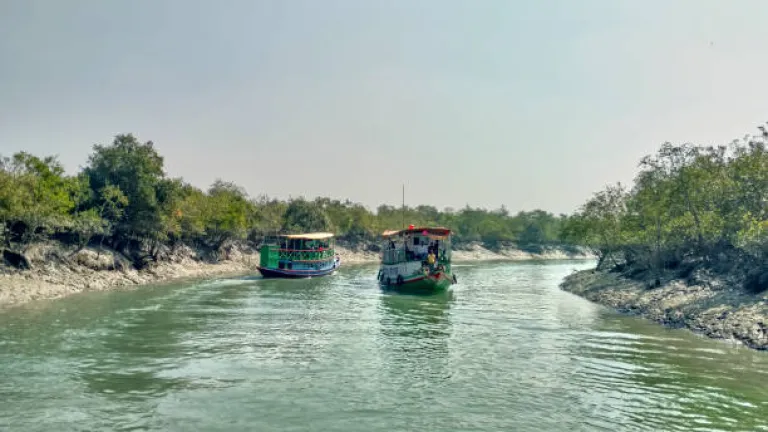
The Sundarbans, a UNESCO World Heritage site, is one of the most remarkable eco-tourism destinations in the world. Stretching across the coastal regions of India and Bangladesh, it is home to the largest mangrove forest, unique wildlife, and a rich cultural heritage.
Eco-tourism in the Sundarbans focuses on preserving the natural ecosystem while allowing visitors to experience its beauty responsibly.
Also read: Volunteer Travel India: Everything you need to know
Here’s an extensive guide on everything you need to know about Sundarban Eco-Tourism.
1. The Ecosystem of the Sundarbans
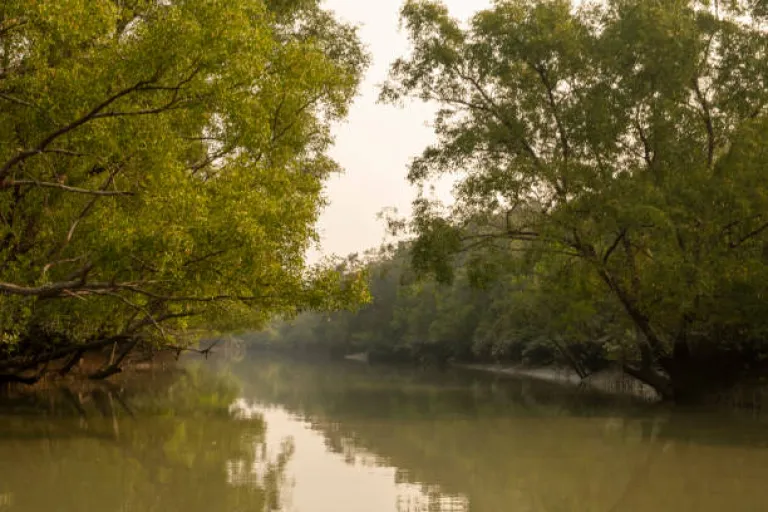 The Sundarbans is famous for its vast mangrove forests, tidal waterways, and mudflats, which are crucial for supporting diverse wildlife.
The Sundarbans is famous for its vast mangrove forests, tidal waterways, and mudflats, which are crucial for supporting diverse wildlife.
This unique ecosystem plays a vital role in protecting coastal regions from cyclones and erosion while also supporting a variety of species, including the iconic Royal Bengal Tiger, estuarine crocodiles, and hundreds of bird species.
The region covers about 10,000 square kilometers, with around 4,200 square kilometers in India. It is recognized for its biodiversity, housing over 260 species of birds, 120 species of fish, 42 species of mammals, and many endangered animals like the Gangetic dolphin and saltwater crocodiles.
2. Eco-Tourism in the Sundarbans
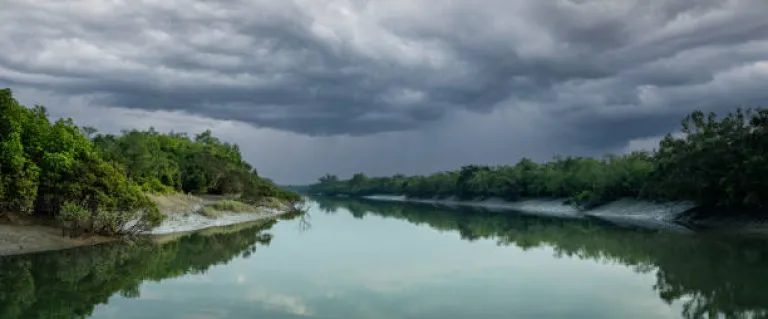 Eco-tourism in the Sundarbans is structured to minimize environmental impact while giving visitors an immersive experience in nature.
Eco-tourism in the Sundarbans is structured to minimize environmental impact while giving visitors an immersive experience in nature.
Various organizations and local communities have developed initiatives to promote responsible tourism, encouraging practices like minimizing plastic usage, following strict wildlife preservation guidelines, and supporting local livelihoods.
Sundarban eco-tourism offers visitors a chance to experience the pristine beauty of the mangrove forests, encounter wildlife in its natural habitat, and learn about the conservation efforts to protect this delicate ecosystem.
3. Sundarban Eco-Tourism Activities
 The activities in Sundarban focus on sustainably experiencing nature. These include:
The activities in Sundarban focus on sustainably experiencing nature. These include:
Boat Safaris
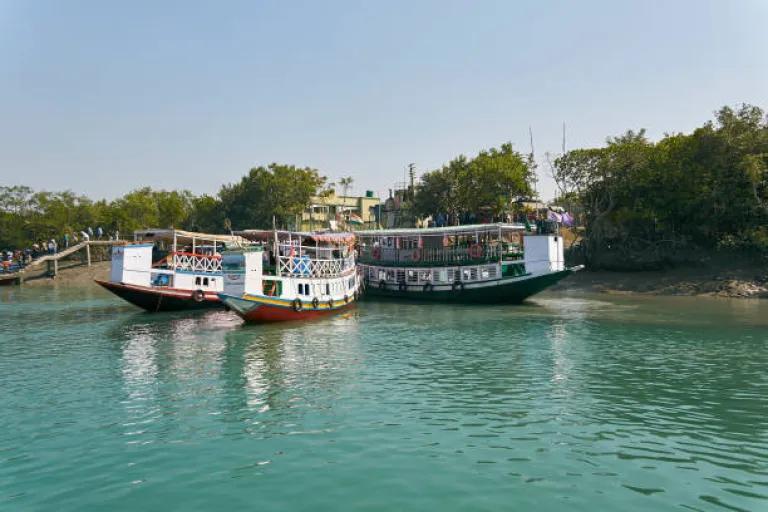 Boat safaris are the highlight of eco-tourism in the Sundarbans. Visitors explore the intricate network of rivers, estuaries, and creeks to observe the flora and fauna.
Boat safaris are the highlight of eco-tourism in the Sundarbans. Visitors explore the intricate network of rivers, estuaries, and creeks to observe the flora and fauna.
The boat tours offer a safe and eco-friendly way to experience the forest while providing the best chance to spot wildlife, including the elusive Royal Bengal Tiger, spotted deer, wild boars, and various bird species.
Best time for a boat safari: November to February, when the weather is cooler, and wildlife is more active near water bodies.
Bird Watching
 The Sundarbans is a birdwatcher's paradise, offering sightings of migratory and resident birds such as kingfishers, herons, egrets, storks, and raptors like the white-bellied sea eagle.
The Sundarbans is a birdwatcher's paradise, offering sightings of migratory and resident birds such as kingfishers, herons, egrets, storks, and raptors like the white-bellied sea eagle.
Winter months (December to February) attract a wide range of migratory species, enhancing the birdwatching experience.
Village Tours
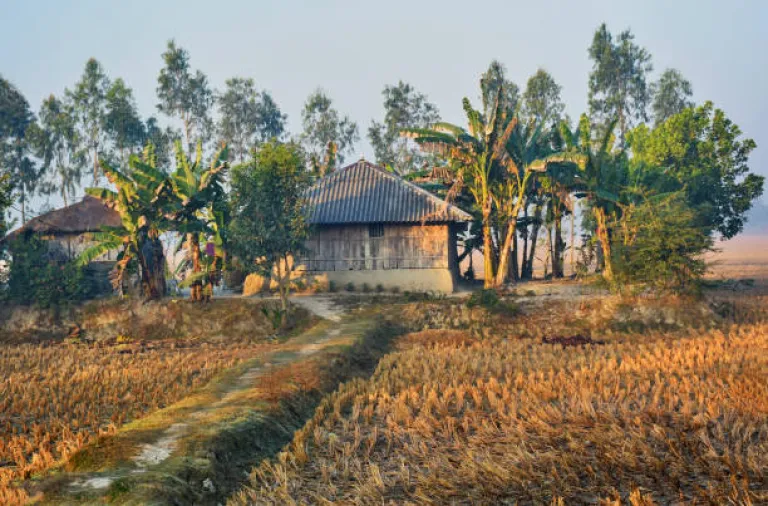 Eco-tourism in the Sundarbans extends beyond wildlife exploration. Village tours allow visitors to connect with the local culture, interact with the indigenous communities, and learn about their traditional livelihoods such as honey collection, fishing, and handicraft making.
Eco-tourism in the Sundarbans extends beyond wildlife exploration. Village tours allow visitors to connect with the local culture, interact with the indigenous communities, and learn about their traditional livelihoods such as honey collection, fishing, and handicraft making.
These experiences help support local economies while preserving the area's cultural heritage.
Trekking and Nature Walks
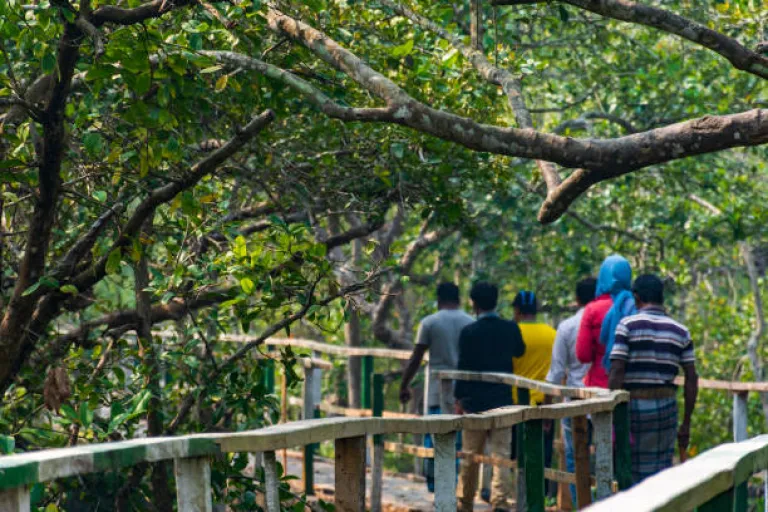 Guided nature walks in the forest buffer zones provide an intimate way to experience the mangroves and their wildlife. Visitors can trek through designated areas to observe the unique flora, including the sundari trees, which give the forest its name.
Guided nature walks in the forest buffer zones provide an intimate way to experience the mangroves and their wildlife. Visitors can trek through designated areas to observe the unique flora, including the sundari trees, which give the forest its name.
Watchtowers
 Strategically located watchtowers, such as the Sudhanyakhali and Sajnekhali watchtowers, offer excellent opportunities to observe wildlife. These elevated platforms provide panoramic views of the forest and rivers, with a higher chance of spotting deer, tigers, and bird species.
Strategically located watchtowers, such as the Sudhanyakhali and Sajnekhali watchtowers, offer excellent opportunities to observe wildlife. These elevated platforms provide panoramic views of the forest and rivers, with a higher chance of spotting deer, tigers, and bird species.
4. Sundarban Eco-Tourism Packages and Stays
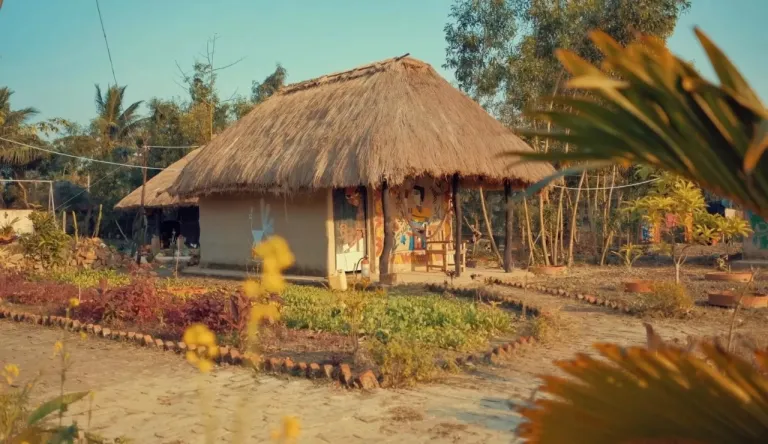 Sundarban eco-tourism offers a variety of eco-friendly resorts and lodges that focus on sustainability, combining natural beauty with responsible tourism.
Sundarban eco-tourism offers a variety of eco-friendly resorts and lodges that focus on sustainability, combining natural beauty with responsible tourism.
These accommodations are designed to have a minimal impact on the environment by incorporating practices such as solar energy use, rainwater harvesting, and providing organic meals sourced locally.
Below are some popular eco-friendly resorts and approximate costs.
Popular Eco-Friendly Resorts in the Sundarbans
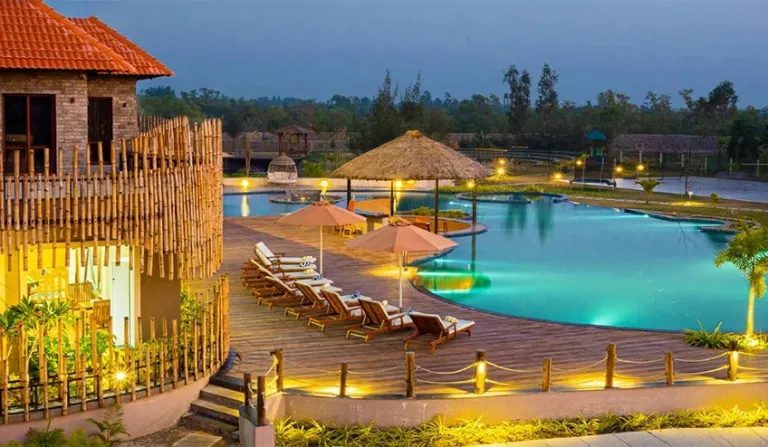
Sunderban Tiger Camp
Located near Sajnekhali, the Sunderban Tiger Camp is a popular eco-resort that combines comfort with sustainable practices.
They offer boat safaris, nature walks, and birdwatching tours while maintaining eco-friendly systems like rainwater harvesting and solar-powered lighting.
Price: Approx. INR 6,000 to INR 8,000 per night (inclusive of meals, accommodation, and boat safaris).
Sundarban Jungle Camp
A community-run eco-lodge located on Bali Island, the Sundarban Jungle Camp offers a unique blend of wildlife experiences and cultural immersion.
Guests can enjoy village tours, tiger tracking, and nature walks while staying in traditional cottages. Meals are prepared using organic, locally sourced ingredients.
Price: Approx. INR 4,500 to INR 6,500 per night (inclusive of meals, guided tours, and safaris).
Eco Village Resort
For a peaceful retreat with a rustic feel, the Eco Village Resort offers simple, eco-friendly cottages made from natural materials like bamboo and mud.
This resort focuses on guided eco-tours, birdwatching, and promoting sustainable tourism through their initiatives.
Price: Approx. INR 3,500 to INR 5,000 per night (inclusive of meals, eco-tours, and accommodations).
Sundarban Eco-Tourism Tour Packages
Tour operators in the Sundarbans offer various eco-tourism packages designed to showcase the natural and cultural beauty of the region.
These packages typically include a mix of wildlife safaris, village visits, birdwatching, and educational programs on conservation efforts.
Package Details
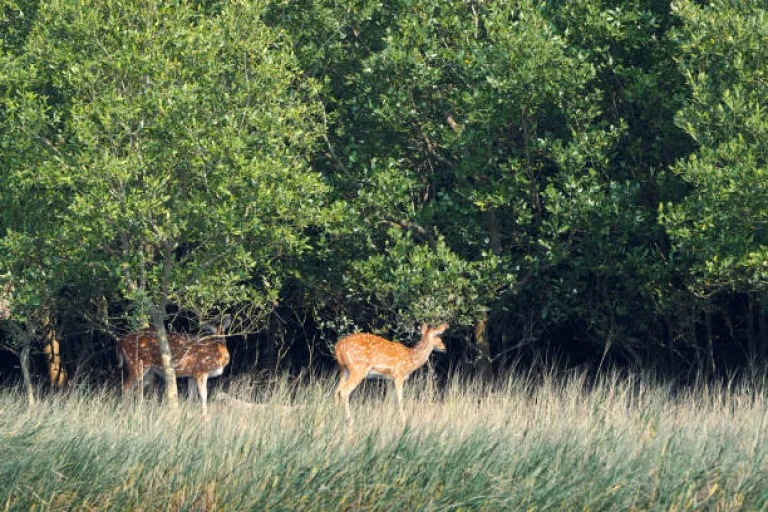
Boat Safaris
Boat safaris are the highlight of Sundarban eco-tourism. These safaris take travelers deep into the mangrove forests, where they may spot Royal Bengal Tigers, spotted deer, and a variety of birds. The safari usually lasts for 2-3 hours.
Price: Approx. INR 1,000 to INR 2,000 per person per boat safari.
Birdwatching Tours
For bird enthusiasts, birdwatching tours provide an opportunity to observe some of the 260+ bird species in the region, including herons, kingfishers, and raptors.
Price: Approx. INR 500 to INR 1,000 per person.
Village Visits and Cultural Tours
These tours offer an in-depth look into the life of the local communities. Visitors can explore villages, meet local honey collectors, fishers, and artisans, and learn about sustainable practices.
Price: Approx. INR 800 to INR 1,500 per person.
Educational Conservation Tours
These tours focus on the conservation efforts taking place in the Sundarbans, particularly the protection of endangered species like the Royal Bengal Tiger and the estuarine crocodile.
Price: Approx. INR 1,000 to INR 1,500 per person.
Tour Packages and Costs
Sundarban eco-tourism packages are generally priced based on the type of accommodation, duration of the tour, and the activities included. Below are some typical offerings:
2 Days, 1 Night Package:
Includes accommodation, meals, boat safaris, village visits, and guided tours.
Price: Approx. INR 4,000 to INR 6,000 per person.
3 Days, 2 Nights Package:
Includes accommodation, meals, boat safaris, village tours, and birdwatching tours. This package allows for a deeper exploration of the Sundarbans.
Price: Approx. INR 6,000 to INR 8,000 per person.
Customized Luxury Packages:
For those seeking a more premium experience, luxury packages offer air-conditioned rooms, private boat safaris, and personal guides. These packages are perfect for couples or families wanting exclusive and personalized tours.
Price: Approx. INR 10,000 to INR 15,000 per person for 2 nights.
What’s Included in Sundarban Eco-Tourism Packages?
1. Accommodation: Stays in eco-lodges or resorts that follow sustainable practices.
2. Meals: Organic, locally sourced meals, including breakfast, lunch, and dinner.
3. Guided Tours: Expert naturalists and local guides lead all wildlife, village, and birdwatching tours.
4. Transportation: Most packages include boat transfers to the lodges and eco-tour sites.
5. Park Entry Fees: Fees for entering wildlife reserves and protected areas are usually included in the package cost.
Tips for Choosing the Right Sundarban Tour Package
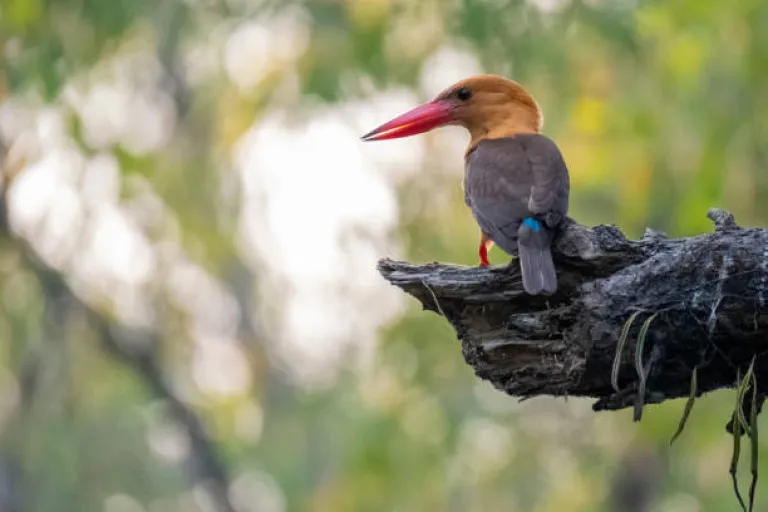 When booking a tour, here are a few tips to help you choose the best eco-friendly package:
When booking a tour, here are a few tips to help you choose the best eco-friendly package:
Check for Eco-Certifications: Ensure that the lodges and tour operators follow sustainable tourism practices and are certified as eco-friendly.
Activity Preferences: If you're a wildlife enthusiast, choose packages that focus on tiger tracking and birdwatching. If you're interested in local culture, opt for packages with village visits.
Travel in Small Groups: Smaller group tours help reduce the environmental footprint and allow for a more intimate experience with nature.
Budget: Be sure to choose a package that fits your budget without compromising the eco-experience.
5. Wildlife in the Sundarbans
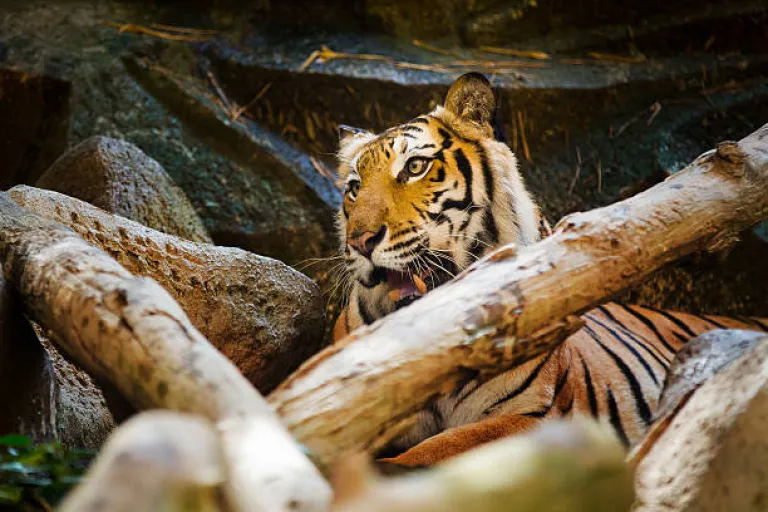 The Sundarbans is a treasure trove of biodiversity, with many species adapted to its unique tidal ecosystem. Wildlife enthusiasts can expect to see:
The Sundarbans is a treasure trove of biodiversity, with many species adapted to its unique tidal ecosystem. Wildlife enthusiasts can expect to see:
Royal Bengal Tiger: The top predator in the Sundarbans, known for its swimming prowess and adaptability to the mangrove habitat.
Estuarine Crocodile: One of the largest reptiles, often seen basking on the mudflats or near water bodies.
Gangetic Dolphin: A critically endangered species, occasionally sighted in the rivers of the Sundarbans.
Spotted Deer and Wild Boar: Commonly spotted from boats, these animals are vital prey for the tiger population.
Additionally, the mangroves support numerous species of reptiles, amphibians, and insects, playing an essential role in maintaining the food chain in this complex ecosystem.
6. Best Time to Visit Sundarban for Eco-Tourism
 The best time to visit the Sundarbans for eco-tourism is between November and February, during the winter months.
The best time to visit the Sundarbans for eco-tourism is between November and February, during the winter months.
The weather is pleasant, with temperatures ranging from 10°C to 25°C, making it ideal for outdoor activities like boat safaris and trekking. Wildlife is also more visible during this period.
Monsoon months (June to September) are not recommended due to heavy rainfall, flooding, and the risk of cyclones, although the forest appears lush and vibrant during this season.
7. How to Reach Sundarban
 Reaching the Sundarbans, a remote and ecologically significant region, is a journey that involves both road and water transport.
Reaching the Sundarbans, a remote and ecologically significant region, is a journey that involves both road and water transport.
The closest major city is Kolkata, the capital of West Bengal, making it the main gateway for travelers.
Whether you're an eco-tourist, a nature lover, or a wildlife enthusiast, the trip to Sundarbans is a scenic adventure in itself.
By Road
From Kolkata, the easiest way to reach the Sundarbans is by road. Visitors typically head to Godkhali, which is the primary entry point for the Sundarbans.
The distance between Kolkata and Godkhali is approximately 100 kilometers, and the journey usually takes around 2.5 to 3 hours, depending on traffic conditions.
Private Vehicle: You can rent a private taxi or drive your own vehicle from Kolkata to Godkhali. Taxis are available for hire in Kolkata, with fares ranging between INR 2,500 to INR 4,000 for a one-way trip, depending on the type of vehicle. Self-driving is also a viable option if you're comfortable navigating the roads.
Public Transport: For budget-conscious travelers, taking a bus from Kolkata to Godkhali is an affordable option.
There are frequent state transport buses from Esplanade Bus Terminal in Kolkata to Basanti, which is close to Godkhali. From Basanti, you can hire a rickshaw or taxi to cover the final stretch.
The bus fare from Kolkata to Basanti is around INR 100 to INR 150, and rickshaw or taxi fare from Basanti to Godkhali is around INR 200 to INR 300.
By Boat
Once you reach Godkhali, the true adventure begins. From this point onward, boats are the only way to access the various islands and eco-lodges scattered across the Sundarbans. The boat journey also serves as a sneak peek into the lush mangrove ecosystem of the region.
Boat Services: From Godkhali, you can either take a shared boat or rent a private boat to travel deeper into the Sundarbans.
Boat operators offer group boat services for tourists, costing around INR 200 to INR 500 per person depending on the destination and type of boat.
Private boat rentals are available for those who prefer a more exclusive experience, with prices ranging from INR 2,000 to INR 5,000 for a boat that can accommodate 8-10 people.
Boat Duration: The duration of the boat ride varies depending on your destination. A trip to the nearest eco-lodges or resorts generally takes 1 to 1.5 hours.
However, if you're heading deeper into the mangrove forests for a full-day boat safari or to a more remote lodge, the journey can take 2 to 3 hours.
By Train
For those who prefer train travel, another option is to take a train from Kolkata to Canning, a small town approximately 50 kilometers from the city. The train journey from Sealdah Station in Kolkata to Canning is a comfortable and affordable option for reaching the Sundarbans region.
Train Details: Several trains run daily from Sealdah to Canning, with travel times averaging 1.5 hours.
The cost of a one-way ticket is quite affordable, ranging from INR 20 to INR 40 for general seating. This makes the train a popular choice for both locals and tourists.
Road from Canning to Godkhali: After arriving at Canning, the next step is to take a taxi or auto-rickshaw to Godkhali, which is about 30 kilometers away.
The road journey takes around 1 hour, and you can expect to pay around INR 500 to INR 700 for a private taxi.
Shared auto-rickshaws are also available for a more economical option, costing around INR 100 per person.
Also read: Museums in Kolkata for kids: Timings, location and more!
Additional Tips
Private Tour Operators: Many eco-tourism operators and resorts in Sundarbans offer pickup services from Kolkata or Canning.
These packages often include both road and boat transfers, making the process hassle-free. The cost for such packages ranges from INR 6,000 to INR 10,000, depending on the operator and level of service.
Time Consideration: It's recommended to start your journey early in the morning from Kolkata, especially if you plan to take a shared boat or join a group tour in the Sundarbans.
Most boat services operate during the daylight hours, and an early start ensures you maximize your time exploring the forests.
Eco-Friendly Travel: If you’re looking to reduce your environmental footprint, opting for shared transport services and eco-friendly boat operators will align with the spirit of Sundarban Eco-Tourism. Always inquire about the sustainable practices followed by your tour operator.
8. Conservation and Eco-Tourism Initiatives
 Sundarban eco-tourism is closely linked with conservation efforts. Authorities and non-governmental organizations work together to:
Sundarban eco-tourism is closely linked with conservation efforts. Authorities and non-governmental organizations work together to:
Promote sustainable tourism: Encouraging low-impact tourism that minimizes environmental degradation.
Preserve biodiversity: Special efforts are made to protect endangered species like the Royal Bengal Tiger and the Gangetic Dolphin.
Support local communities: By involving locals in tourism activities such as guiding, cooking, and cultural presentations, eco-tourism helps provide sustainable livelihoods.
9. Important Tips for Sundarban Eco-Tourism
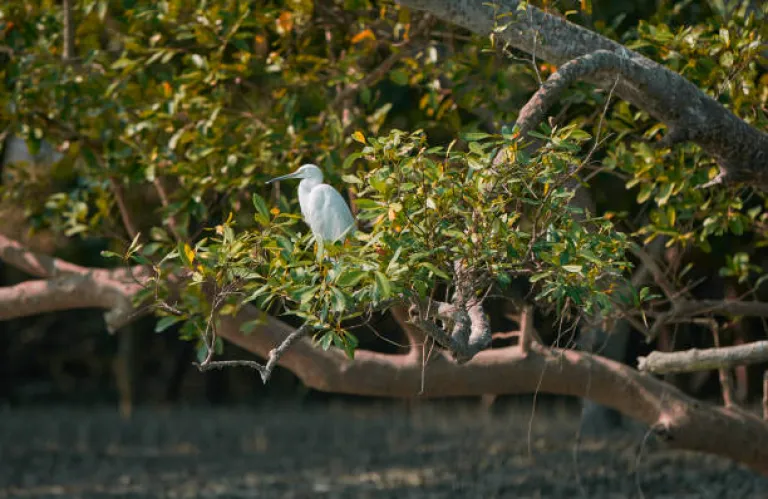
Respect local customs: The indigenous communities of the Sundarbans have unique traditions. Be respectful of their way of life.
Carry eco-friendly essentials: Use biodegradable products, avoid single-use plastics, and minimize waste.
Follow safety guidelines: Wildlife encounters, especially with tigers and crocodiles, require caution. Always follow the instructions of guides and authorities.
Prepare for limited connectivity: Mobile networks are weak in the Sundarbans, so be prepared for a digital detox during your visit.
Also read: 20 Natural Wonders of India that you must consider visiting
Sundarban Eco-Tourism is a unique blend of adventure, nature, and conservation. By exploring this awe-inspiring region responsibly, travelers not only enjoy the natural beauty of the largest mangrove forest but also contribute to the preservation of its fragile ecosystem and the livelihoods of local communities.
Whether you're seeking to witness the majestic Royal Bengal Tiger or simply enjoy a peaceful retreat amidst nature, the Sundarbans offers an unforgettable eco-friendly experience.
Published at
About Author
Prerna Dixit
Subscribe our Newsletter
Get our weekly tips and travel news!
Related Posts
10 amazing hacks for comfortable train journeys in India
Make your Indian train journey comfortable with these 10 hacks: choose the right class, pack essentials, stay hydrated, wear comfy clothing, charge devices, bring entertainment, prioritize safety, book lower berths, use travel apps, and socialize.
10 Amazing New Attractions in Singapore - Indian Travelers Guide 2025
Explore the new yet amazing attractions of Singapore
10 Best Zoos in India: Guide to spot your favourite Animals!
Check out India’s best zoos to spot fascinating animals like tigers, rhinos, and red pandas. Enjoy a fun-filled day while supporting wildlife conservation.
10 Hidden Destinations In Northeast India
Immerse yourself in the magic of unexplored landscapes, vibrant cultures, and breathtaking adventures. Ready to redefine your wanderlust?
10 Important Things you should know about South Korea before traveling
Explore the wonders of South Korea with 10 Important Things to Know Before Traveling. This blog unveils cultural insights, from decoding Hangul to navigating bustling streets.
Latest Posts
You don't Need FASTag anymore? Everything you need to know!
No more FASTag from May 1st?
10 Dreamy Experiences for Couples in Kashmir
Fancy some romantic experiences in Kashmir?
How much will a trip to Indonesia cost from India? Travel Budget Guide
Need to budget a tropical getaway from India to Indonesia?
Indian Traveler's 7 Day Itinerary for Island Hopping in Indonesia
Your perfect Indonesian island getaway guide is here!
Best 4-Day Itinerary for Kashmir, India
Ready to fall in love with Kashmir in just four days?

